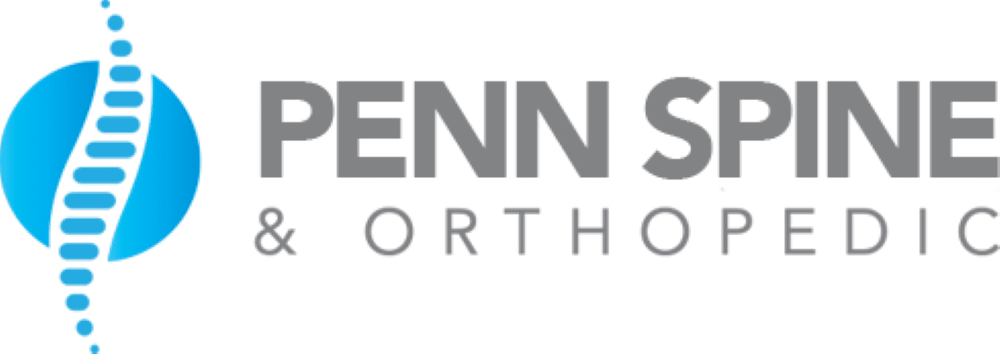The intricacy of treating nerve pain often leads medical professionals to a myriad of pharmaceutical options. These range from simple over-the-counter remedies to potent prescription medications, each with their own unique benefits and drawbacks. As clinicians, our task is not only to soothe the immediate discomfort but also to contemplate the long-term implications of each treatment choice, including potential side effects and the risk of dependency. The inherent challenges and the continuous evolution in this field of pain management beckon for a thorough exploration.
Understanding Nerve Pain
Nerve pain, scientifically termed as neuropathic pain, is a complex, chronic pain state generally accompanied by tissue injury. The manifestation of neuropathic pain is the result of non-standard processing of sensory information in the peripheral and central nervous systems. It is unique regarding its pathophysiology, clinical presentation, and therapeutic response.
A neuropathic diet, enriched with elements known to support nerve health, can be an effective strategy to manage this complex condition. For instance, vitamins B1, B6, B12, and E are essential for nerve function and regeneration. Additionally, omega-3 fatty acids, found in fish, flaxseeds, and walnuts, have demonstrated neuroprotective effects. Such dietary modifications can aid in the management of neuropathic pain and improve patient outcomes.
The psychological impact of neuropathic pain should not be underestimated. Continuous pain can lead to stress, anxiety, sleep disturbances, and depression. The reciprocal relationship between pain and psychological distress further exacerbates the condition, forming a destructive cycle. Therefore, a multidisciplinary approach should be utilized to provide excellent patient care for the comprehensive management of neuropathic pain.
Common Causes of Nerve Pain
Nerve pain, or neuropathic pain, can arise from a multitude of factors that inflict damage or dysfunction on the nervous system. These can include systemic conditions such as diabetes, viral infections, or autoimmune diseases, as well as physical trauma or surgical procedures. In the subsequent discussion, we will explore these common causes and their associated triggers in greater detail, providing an in-depth understanding of the etiology of nerve pain.
Understanding Nerve Pain
In the vast landscape of human physiology, the intricate network of nerves often falls prey to various factors leading to nerve pain, a condition medically known as neuropathy. Pain perception is a complex process, and when disrupted, can result in severe discomfort. Nerve pain arises when nerves become damaged, often due to health conditions like diabetes or physical injury. This damage affects the pain perception process, causing individuals to experience a heightened sense of pain. A neurological examination can provide insight into the extent of nerve damage, assisting medical professionals in determining the most suitable course of treatment. Understanding nerve pain is vital in the development of effective nerve pain medicine, offering relief to those afflicted.
Nerve Pain Triggers
Having established a foundational understanding of nerve pain, it is important to now examine its common triggers, exploring the physiological circumstances that often lead to the onset of neuropathy. Pain Perception Factors play an essential role in this phenomenon.
Nerve pain triggers are often multi-faceted, encompassing:
- Physical injury: Any trauma or injury can potentially lead to nerve damage, instigating nerve pain.
- Disease: Conditions like diabetes, cancer, or autoimmune disorders often induce neuropathy.
- Chronic inflammation: This can damage protective barriers around nerves, exposing them to conditions causing pain.
- Vitamin deficiencies: Lack of vitamins B and E can cause nerve pain.
- Alcoholism: Excessive alcohol consumption can have toxic effects on nerve tissue, leading to nerve pain.
Understanding these triggers is the first step towards effective Nerve Pain Prevention, reducing the risk of neuropathy.
Symptoms Associated With Nerve Pain
Experiencing nerve pain can manifest in a multitude of symptoms, ranging from a mild tingling sensation to debilitating discomfort. These symptoms are indicative of the pain perception variations that patients may experience. For some, nerve pain is a significant, dull ache, while others may describe it as a sharp, stabbing sensation. These variations in pain perception are not only influenced by the type and location of the nerve damage but also by individual differences in pain tolerance and perception.
Numbness, hypersensitivity to touch, muscle weakness, and difficulty moving the affected area are also common physical symptoms associated with nerve pain. A point worth mentioning is that these symptoms can severely impact a patient’s quality of life, causing significant physical distress.
The emotional impact of nerve pain is often overlooked, but it plays a critical role in the patient’s overall well-being. Chronic nerve pain can lead to anxiety, depression, and sleep disturbances, further exacerbating the physical discomfort. These psychological symptoms can create a vicious cycle, where the emotional distress intensifies the perception of pain, and vice versa. As such, a thorough approach to managing nerve pain should include strategies to address both the physical and emotional symptoms.
Over-the-Counter Medications
While the physical and emotional implications of nerve pain necessitate thorough management, one of the initial steps towards relief often involves the use of over-the-counter medications. During this process, it is important to take into account both drug interactions and medication affordability.
Over-the-counter medications, commonly known as OTCs, are generally safe for use, but they may interact with other medications or underlying health conditions. Hence, it’s vital to understand these potential interactions to guarantee safe and effective usage.
Regarding affordability, OTCs are typically less expensive than prescription drugs, making them more accessible for a broader population. However, the cost can still be a concern for some individuals, especially for long-term management of chronic nerve pain.
Here are some commonly used over-the-counter medications for nerve pain:
- Acetaminophen: Often used for mild to moderate pain.
- NSAIDs: Nonsteroidal anti-inflammatory drugs such as ibuprofen and naproxen.
- Topical creams: These contain ingredients like capsaicin or lidocaine.
- Nutritional supplements: Such as vitamin B and alpha-lipoic acid.
- Homeopathic remedies: Certain herbs and natural substances may provide some relief.
Prescription Drug Options
Often, when over-the-counter medications fail to deliver adequate relief, physicians may prescribe stronger medications specifically designed to manage nerve pain. These prescription drugs, usually categorized as anticonvulsants, antidepressants, and opioids, operate on a more potent level and target specific pain receptors within the nervous system.
Anticonvulsants, such as gabapentin and pregabalin, are designed to suppress the overactive nervous system by stabilizing hyperactive nerves. Antidepressants, including duloxetine and amitriptyline, alter the brain’s perception of pain by increasing the concentration of certain neurotransmitters. Opioids, like tramadol and oxycodone, are powerful analgesics which inhibit the transmission of pain signals to the brain.
However, these prescription options are not without their potential drawbacks. The likelihood of drug interactions increases with the introduction of these potent substances, especially when combined with other medications. Physicians must carefully consider the patient’s entire pharmaceutical regimen to avoid adverse reactions.
Moreover, medicine accessibility can be a challenge for some patients. Prescription nerve pain medications, particularly opioids, are often tightly regulated due to their potential for abuse. This can result in difficulties obtaining these medications, even when they are medically necessary. Therefore, the balance between effective nerve pain management and potential risks must be carefully weighed.
Topical Treatments for Nerve Pain
For patients seeking an alternative to oral medications, topical treatments offer a promising solution for mitigating nerve pain. These treatments, applied directly to the skin over the painful area, can provide targeted relief with fewer systemic side effects. The topical approach bypasses the digestive system, reducing the risk of stomach upset and other complications associated with oral medications.
Topical treatments available include:
- Capsaicin creams: These harness the heat-producing component of chili peppers for pain relief.
- Lidocaine patches: These provide localized numbing to soothe nerve pain.
- Menthol creams: These produce a cooling effect that can disrupt pain signals.
- Compound creams: These are custom-mixed medications made by a pharmacist to meet individual patient needs.
- Cannabidiol (CBD) oils: These are derived from the cannabis plant and have been shown to provide potential nerve pain relief.
The efficacy of these treatments can be enhanced by lifestyle modifications. For instance, the acupuncture benefits in managing nerve pain have been scientifically documented. Additionally, dietary impacts on nerve pain cannot be overlooked. A balanced, nutrient-rich diet can support overall nerve health and potentially reduce pain levels. But remember, it’s always important to consult with a healthcare professional before starting any new treatment regimen.
Natural Remedies and Supplements
Beyond traditional medications, a variety of natural remedies and supplements have emerged as beneficial in the management of nerve pain. Herbal infusions, such as those from St. John’s Wort and Skullcap, have been used in traditional medicine for their analgesic and nerve-calming properties. Both herbs contain compounds that interact with the nervous system to reduce inflammation and pain. Clinical trials have shown promising results in utilizing these infusions for neuropathic pain management.
In addition to herbal infusions, the use of acupuncture has demonstrated effectiveness in pain relief. Acupuncture, a centuries-old Chinese practice, involves inserting thin needles into specific points on the body to stimulate nerves, muscles, and connective tissue. This stimulation boosts the body’s natural painkillers and alters pain perception pathways. Several studies have shown acupuncture to be effective in managing nerve pain, specifically in cases of peripheral neuropathy.
Moreover, supplements like alpha-lipoic acid, an antioxidant that has been studied for its potential to improve nerve function and reduce pain, are gaining recognition. Other beneficial supplements include B-vitamins, known for their role in nerve health and magnesium, which helps regulate nerve impulses.
These natural remedies and supplements offer a holistic approach to nerve pain management, while being generally well-tolerated and causing fewer side effects than many traditional medications.
Role of Physical Therapy
Physical therapy plays an essential role in managing nerve pain, employing a range of techniques specifically designed to alleviate discomfort and enhance functionality. Regular exercise, as part of a structured therapy regimen, has been shown to greatly improve nerve pain symptoms. Evaluating the impact of physical therapy on patients provides valuable insights into the efficacy of these interventions in promoting nerve health and mitigating pain.
Physical Therapy Techniques
In the management of nerve pain, several efficacious physical therapy techniques often play an integral role, leveraging the body’s natural healing mechanisms to alleviate discomfort and improve functionality. Therapeutic massage benefits include stimulating blood flow, reducing inflammation, and easing muscle tension that can often exacerbate nerve pain.
Acupuncture, with its proven efficacy, works by triggering the release of endorphins, the body’s natural painkillers, and promoting nerve regeneration. Other techniques include:
- Transcutaneous Electrical Nerve Stimulation (TENS), which uses low-voltage electrical currents to relieve pain.
- Manual therapy, such as manipulation and mobilization, which improves joint and muscle flexibility.
- Thermotherapy, which utilizes heat to increase blood flow and relax muscles.
- Cryotherapy, applying cold to numb nerve irritation.
- Ultrasound therapy, which uses sound waves to stimulate deep tissue healing.
Exercise for Nerve Pain
Utilizing the principles of biomechanics and kinesiology, exercise therapy serves as an essential component in the physical therapy approach to managing nerve pain. Exercise promotes blood circulation, enhancing nerve regeneration, while also stimulating the release of endorphins, the body’s natural painkillers. Nerve stimulation techniques, such as transcutaneous electrical nerve stimulation (TENS), are often integrated into exercise regimes, sending low-voltage electrical currents to the nerves, thereby reducing pain. Additionally, acupuncture, a centuries-old practice, holds substantial benefits for nerve pain. It stimulates specific points on the body, encouraging the nervous system to release chemicals that change pain perception. Exercise, in conjunction with these techniques, forms a holistic approach to nerve pain management.
Therapy Impact on Patients
The profound impact of physical therapy on patients suffering from nerve pain extends from alleviating discomfort to improving their overall quality of life. Physical therapy, as part of a thorough treatment plan, optimizes function, facilitates movement, and promotes emotional wellbeing, thereby enhancing patients’ ability to perform daily activities.
Crucial components of therapeutic interventions include:
- Mobilization techniques to reduce pain and improve mobility
- Mind body therapies such as mindfulness and relaxation techniques
- Exercise programs designed to strengthen muscles and improve balance
- Education on self-management strategies to maintain improvements
- Emotional support and counseling to cope with the psychological impact of chronic pain
Physical therapy, alongside proper medication, plays a significant role in providing a holistic approach to nerve pain management, aiming to restore patient’s function and quality of life.

Innovative Treatment Approaches
Advancements in medical science have paved the way for several innovative approaches towards nerve pain management, heralding a new era of treatment options that are both effective and minimally invasive. One such approach that has gained significant traction is acupuncture. Acupuncture benefits extend to the relief of chronic nerve pain by stimulating certain points on the body, which in turn triggers the nervous system to release chemicals that alter pain perception.
Another innovative treatment is the use of minimally invasive procedures, which have transformed the landscape of nerve pain management. These procedures, such as nerve blocks and spinal cord stimulation, often provide more targeted relief and fewer side effects than traditional surgical procedures.
Nerve blocks involve the injection of a local anaesthetic directly into a specific nerve or group of nerves. This blocks the transmission of pain signals to the brain, providing temporary relief. On the other hand, spinal cord stimulation uses a device to send low-level electrical signals to the spinal cord or specific nerves to prevent pain signal transmission.
These innovative treatments have revolutionized nerve pain management, offering patients a wider range of options and potentially improved quality of life.
Lifestyle Changes for Pain Management
In the context of nerve pain management, lifestyle modifications play an instrumental role. The incorporation of healthy habits and regular physical activity can contribute greatly to pain reduction. In the following section, we will explore these aspects in detail, focusing on how they can be effectively employed in managing nerve pain.
Healthy Habits for Relief
While managing nerve pain often requires medication, incorporating certain lifestyle changes can greatly enhance the effectiveness of treatment and provide substantial relief. Two fundamental aspects that have a profound impact on nerve pain are Dietary Influence and Stress Management.
Understanding and implementing healthier habits can make a difference in managing nerve pain. Here are some key points to take into account:
- Adopt a balanced diet rich in fruits, vegetables, lean proteins, and whole grains which can help reduce inflammation, a common cause of nerve pain.
- Limit intake of refined sugars and saturated fats which are known to exacerbate pain.
- Regularly engage in stress-reducing activities such as meditation, deep breathing, or yoga.
- Ensure adequate sleep, as poor sleep can intensify pain perception.
- Avoid alcohol and smoking, both of which can worsen nerve pain.
Exercise and Pain Reduction
Regular physical activity, when incorporated judiciously into one’s routine, can greatly ameliorate nerve pain by improving circulation, promoting nerve regeneration, and reducing stress. One highly beneficial form of exercise is Yoga. The benefits of Yoga extend beyond flexibility and strength. It has been clinically demonstrated that regular practice can enhance the body’s natural painkillers, endorphins, and block the perception of pain. Coupled with Yoga, Acupuncture, an alternative therapy, has proven its effectiveness in pain reduction. The mechanism involves the insertion of fine needles at specific points, stimulating the body’s natural healing response and promoting better blood flow. Both Yoga and Acupuncture, when combined with regular exercise, can significantly contribute to a holistic approach to nerve pain management.
Risks and Side Effects of Medications
Potential risks and adverse effects are inherent with any medication, and nerve pain medicines are no exception to this rule. A thorough understanding of these risks, including medication misuse consequences and addiction potential, can enhance patient safety and efficacy of treatment.
Medicine misuse can result in severe health consequences, such as organ damage, cognitive impairments, and even death. Additionally, exploration into the addictive potential of these medications has revealed a concerning trend. Certain medications, particularly opioids, pose a high risk for dependency and addiction.
Some common side effects of nerve pain medications include:
- Drowsiness or fatigue
- Dizziness or lightheadedness
- Skin rashes or other allergic reactions
- Gastrointestinal issues, such as nausea or constipation
- Mental health issues, like depression or anxiety
It’s crucial for healthcare providers to thoroughly discuss these potential risks and side effects with patients before starting treatment. Risk mitigation strategies, such as regular monitoring and dose adjustments, can help guarantee safe and effective use of nerve pain medications. Ultimately, the goal should be to manage pain effectively while minimizing harm to the patient.
Frequently Asked Questions
Can Nerve Pain Be Completely Cured?
While the origins of nerve pain can vary, complete cure is not always possible. Management strategies often focus on symptom relief, incorporating alternative therapies alongside traditional treatments to improve overall quality of life.
Are There Specific Diets That Can Aid in Nerve Pain Management?
Specific diets, particularly those rich in nutritional supplements and a vegan regimen, can potentially aid in managing nerve pain. These diets can fortify the body’s natural pain defense and promote overall nerve health.
Do Nerve Pain Medications Interact With Other Drugs?
Yes, certain medications may interact with others, potentially causing side effects or altering drug efficacy. It’s vital to discuss all current medications with a healthcare provider to guarantee safe and effective treatment management.
Does Insurance Typically Cover Nerve Pain Treatments?
Insurance coverage for treatments varies greatly based on the policy. Some may have limitations or may not cover specific treatments, leading to potential out-of-pocket expenses for the patient. It is crucial to check individual insurance details.
Can Nerve Pain Return After Successful Treatment?
Yes, nerve pain can return after successful treatment. This relapse can be triggered by various factors, including an individual’s varying pain thresholds, additional injuries, or underlying conditions that continue to impact nerve health.


